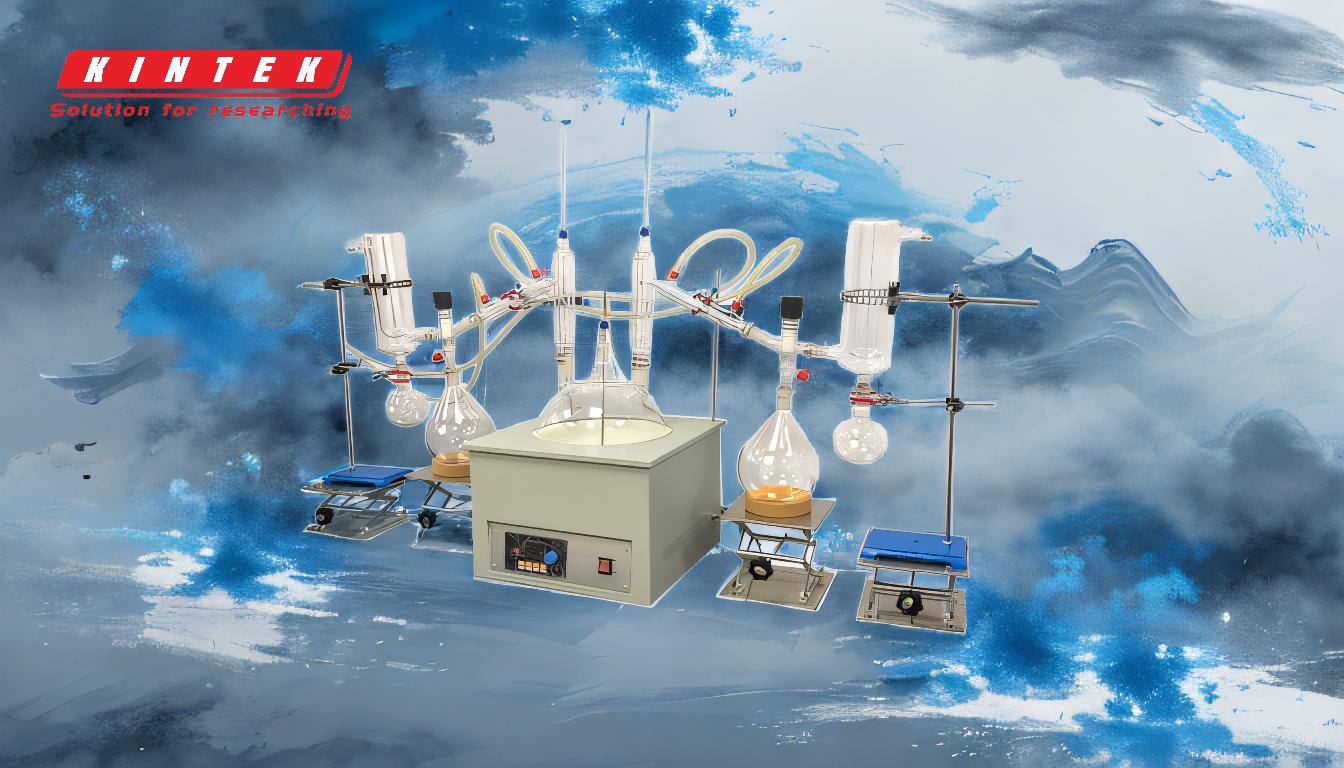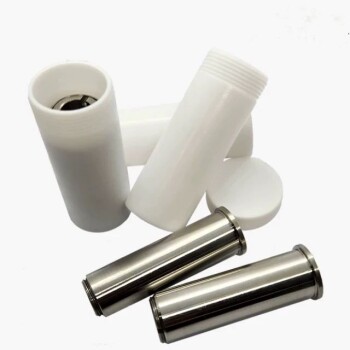Short-path distillation is a specialized distillation technique used to separate and purify compounds, particularly those that are heat-sensitive or have high boiling points. It operates under reduced pressure, allowing for lower boiling temperatures and minimizing thermal degradation. The process involves heating a mixture to vaporize its components, which then travel a short distance to a condenser where they are cooled and collected. This method is widely used in industries such as pharmaceuticals, food, and cosmetics for extracting and purifying materials like essential oils, CBD, and other volatile compounds. Rolled film short-path distillation is a variation of this technique, where the liquid mixture is spread into a thin film over a heated surface, enhancing evaporation efficiency and separation precision.
Key Points Explained:

-
Definition of Short-Path Distillation:
- Short-path distillation is a low-pressure evaporation technique used to separate and purify compounds based on differences in their volatilities.
- It is particularly effective for heat-sensitive and high-boiling-point materials, as it allows for lower boiling temperatures under reduced pressure.
-
Process Overview:
- The mixture is heated in a boiling flask, causing the more volatile components to vaporize.
- The vapors travel a short distance (typically a few centimeters) to a condenser, where they are cooled and condensed back into a liquid.
- The condensed liquid is then collected, resulting in a purified product.
-
Key Components of the Equipment:
- Boiling Flask: Where the mixture is heated and vaporized.
- Condenser: Positioned close to the boiling flask, it cools the vapors back into a liquid.
- Vacuum Pump: Maintains the reduced pressure necessary for the process.
- Collection Flask: Collects the purified distillate.
-
Advantages of Short-Path Distillation:
- Efficiency: The short distance between the boiling and condensing surfaces minimizes the loss of material and energy.
- Purity: High levels of purity can be achieved due to the precise control of temperature and pressure.
- Versatility: Suitable for a wide range of materials, including those that are heat-sensitive.
-
Applications:
- Pharmaceuticals: Purification of active pharmaceutical ingredients (APIs) and other compounds.
- Food Industry: Extraction of essential oils, flavors, and fragrances.
- Cosmetics: Production of high-purity ingredients for skincare and beauty products.
- CBD Extraction: Isolation and purification of CBD oil from hemp plants.
-
Rolled Film Short-Path Distillation:
- In this variation, the liquid mixture is spread into a thin film over a heated surface, increasing the surface area for evaporation.
- This method enhances the efficiency of the distillation process, allowing for better separation of components and higher throughput.
- It is particularly useful for viscous or heat-sensitive materials that require gentle handling.
-
Operational Parameters:
- Pressure: Typically operates under pressures as low as 0.001mbar to facilitate lower boiling temperatures.
- Temperature: Carefully controlled to prevent thermal degradation of sensitive compounds.
- Distance: The short distance between the boiling and condensing surfaces is crucial for the efficiency of the process.
-
Considerations for Equipment and Consumables:
- Material Compatibility: Ensure that all components of the distillation unit are compatible with the substances being processed to avoid contamination or degradation.
- Maintenance: Regular maintenance of the vacuum pump and condenser is essential to maintain optimal performance.
- Scalability: Consider the scale of production when selecting equipment, as larger units may be required for industrial applications.
By understanding these key points, a purchaser can make informed decisions about the equipment and consumables needed for short-path distillation, ensuring efficient and effective separation and purification processes.
Summary Table:
| Aspect | Details |
|---|---|
| Definition | Low-pressure evaporation technique for separating and purifying compounds. |
| Key Components | Boiling flask, condenser, vacuum pump, collection flask. |
| Advantages | High efficiency, purity, and versatility for heat-sensitive materials. |
| Applications | Pharmaceuticals, food, cosmetics, CBD extraction. |
| Rolled Film Variation | Enhances evaporation efficiency for viscous or heat-sensitive materials. |
| Operational Parameters | Low pressure (0.001mbar), controlled temperature, short vapor travel. |
Need help selecting the right short-path distillation equipment? Contact our experts today!











